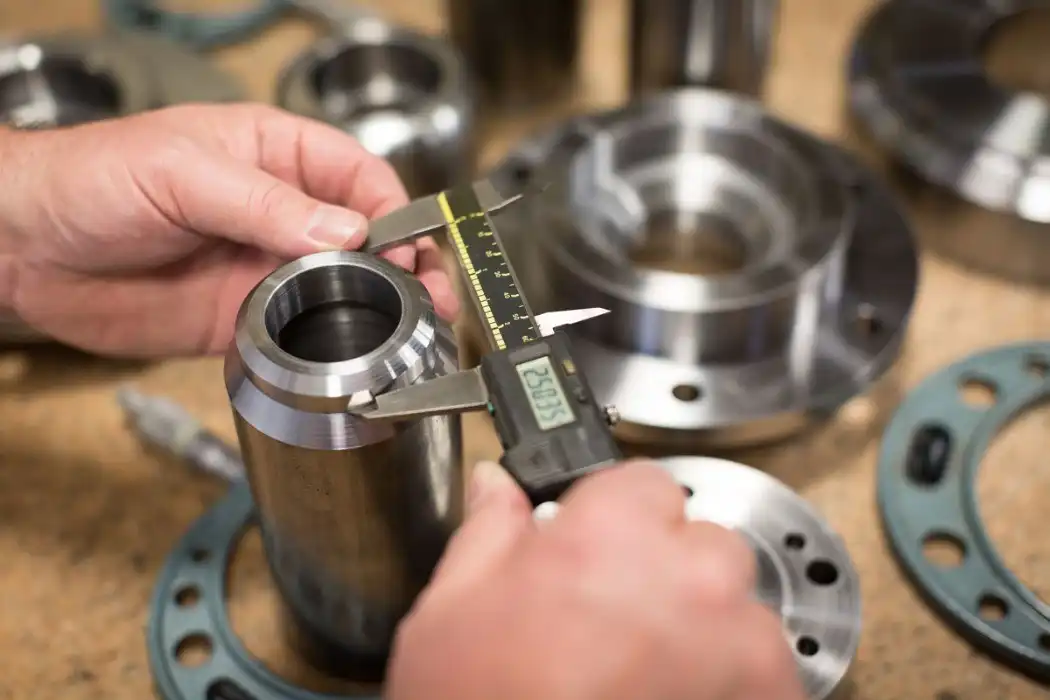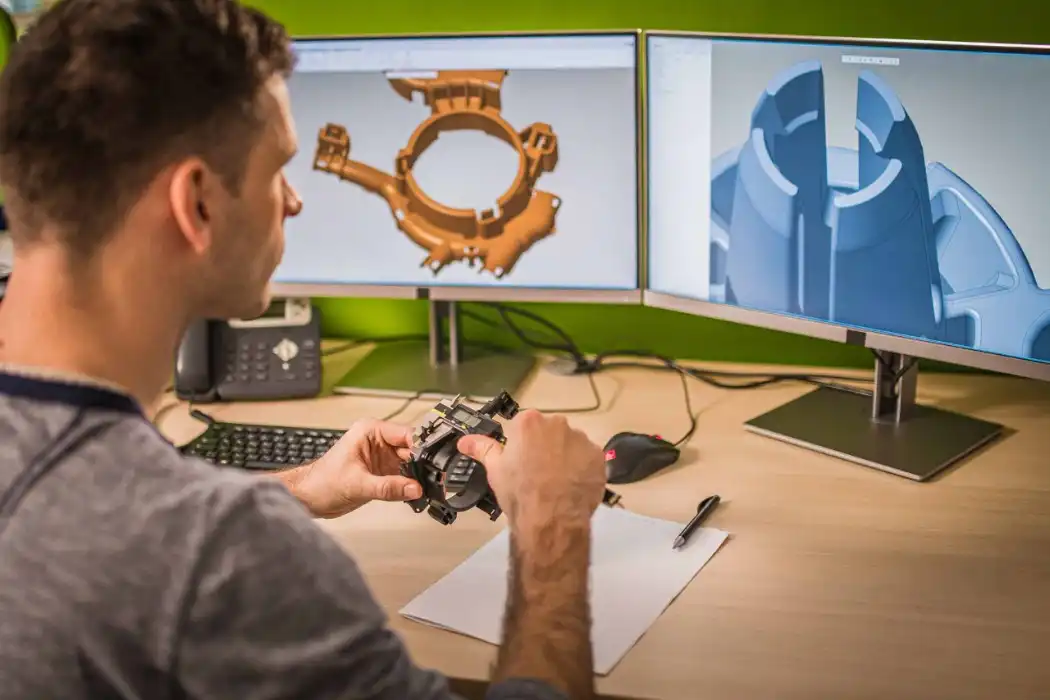Optimizing CAD File Formats and Geometry
Choosing the Right File Format
When preparing your CAD model for CNC milling, selecting the appropriate file format is paramount. While various formats exist, some are more suitable for CNC machining than others. STEP (Standard for the Exchange of Product Data) and IGES (Initial Graphics Exchange Specification) are widely used and highly compatible with most CNC software. By faithfully preserving the model's geometry, these formats guarantee an exact translation of your design to the milling process.
It's crucial to avoid proprietary file formats, as they may not be universally supported by CNC machines or may lose important data during conversion. If you're working with a specific CNC service provider, it's advisable to consult them about their preferred file formats to ensure seamless integration with their systems.
Simplifying Complex Geometry
Complex geometries can pose challenges during CNC milling. To optimize your CAD model for CNC machining, consider simplifying intricate features without compromising the part's functionality. This may involve removing unnecessary details, filleting sharp corners, or combining multiple small features into larger, more machinable elements.
Pay special attention to thin walls, deep pockets, and tight tolerances. These features can be difficult to machine and may require special tooling or multiple setups. Cutting down on design complexity may help you save money, cut down on machining time, and make better parts in the end.

Ensuring Proper Scale and Units
A common pitfall in CAD preparation is inconsistency in scale and units. Before exporting your model, double-check that all dimensions are in the correct units (metric or imperial) and that the scale is accurate. Mismatched units can lead to significant errors in the final product, potentially rendering the part unusable.
Most CAD software allows you to set default units and scale. Make use of these options to keep all your projects looking the same. When exporting, verify that the units and scale are preserved in the output file to avoid any discrepancies during the CNC milling process.
Implementing Design for Manufacturability (DFM) Principles
Considering Tool Accessibility
Think about how easy it will be to obtain CNC cutting equipment while you're making your CAD model. Machining features like undercuts, deep pockets, and internal corners may be tricky and may need specialized tools or several setups. To optimize your design for CNC milling, aim to create features that are easily accessible by standard cutting tools.
One effective strategy is to design parts with a minimum internal corner radius that matches or exceeds the smallest end mill diameter you plan to use. Without supplementary procedures like Electrical Discharge Machining (EDM), this method guarantees that all features may be machined.
Incorporating Proper Draft Angles
Draft angles are slight inclines added to vertical surfaces to facilitate part removal from molds. While primarily associated with injection molding, incorporating draft angles in CNC machining can improve surface finish and reduce tooling wear. For vertical walls, a draft angle of 1-3 degrees is often sufficient to achieve these benefits without significantly altering the part's geometry.
When designing features like pockets or cavities, adding a slight draft can make them easier to machine and improve the overall quality of the finished part. With this little adjustment, machining times may be reduced and outcomes can be more uniform across various components.
Avoiding Thin Walls and Delicate Features
Thin walls and delicate features can be problematic in CNC milling due to the risk of vibration, deflection, and breakage during machining. As a general rule, try to maintain a minimum wall thickness of at least 1mm for metals and 1.5mm for plastics. For longer or unsupported walls, increasing the thickness further can improve stability and machining outcomes.
If thin features are unavoidable, consider adding support structures or redesigning the part to distribute stress more evenly. To find a happy medium between design needs and manufacturability, it's best to work with your CNC machining service provider to anticipate problems and find solutions.

Fine-tuning CAD Models for CNC Milling Efficiency
Optimizing Tolerances and Surface Finishes
Specifying appropriate tolerances and surface finishes in your CAD model is crucial for achieving the desired results while minimizing production costs. Overly tight tolerances or unnecessarily fine surface finishes can significantly increase machining time and complexity. Analyze your part's functional requirements and specify tolerances only where they are truly needed.
For non-critical dimensions, consider using standard tolerances that are easily achievable with typical CNC milling processes. Keep in consideration the capabilities of various cutting tools and machining processes when you specify surface finishes. Consulting with your CNC service provider can help you determine the most cost-effective approach to meeting your part's requirements.
Incorporating Machining Datums and Reference Points
To facilitate accurate machining and inspection, incorporate CNC machining clear machining datums and reference points in your CAD model. The CNC programming procedure may be significantly simplified with these elements, which also serve as beginning points for dimensioning. Common datum features include flat surfaces, holes, or edges that are easily identifiable and accessible during machining.
When designing your part, consider how it will be fixtured during the milling process. Including dedicated fixturing points or surfaces can improve stability during machining and enhance overall part accuracy. Clearly communicate these features in your CAD model and associated documentation to ensure they are properly utilized during production.
Leveraging CAM Simulation for Optimization
Many modern CAD/CAM systems offer powerful simulation capabilities that can help identify potential issues before physical machining begins. Utilize these tools to visualize the CNC milling process, detect collisions, and optimize tool paths.You may find places where design changes can increase efficiency or decrease mistake risk by modeling the machining process.
Tool changes, approach/retract motions, and regions with complicated geometry need extra care. Simulations can help you refine your CAD model to minimize unnecessary tool movements and optimize the overall machining strategyBy using this preemptive strategy, a lot of time and money may be saved throughout the actual manufacturing process.

Conclusion
A contemporary manufacturer's toolbox should include a mastery of CAD model preparation for CNC milling. By focusing on file format optimization, implementing design for manufacturability principles, and fine-tuning your models for efficiency for CNC machining, you can significantly enhance the quality and cost-effectiveness of your CNC-milled parts. Remember that collaboration with your CNC service provider and continuous learning about machining processes are key to achieving the best results. Your CAD preparation process will become more simplified as you follow these tips and methods. Shorter turnaround times and better finished items will result from this.
Get CNC-Ready: CAD File Prep Tips from Trusted Supplier | BOEN
At BOEN Prototype, we specialize in delivering high-quality prototypes and low-volume production using advanced CNC machining techniques. We bargain with a tremendous assortment of segments, counting car, healthcare, flying, and shopper hardware, and we have impressive information with a wide extend of materials, counting plastics and metals. Thanks to our state-of-the-art CNC milling capabilities, we are able to provide precision machining services that accurately and efficiently replicate your CAD drawings. When you collaborate with BOEN's committed team of manufacturing professionals, you'll see a difference in your CNC machining projects. Contact us at contact@boenrapid.com to learn how we can support your next project.





